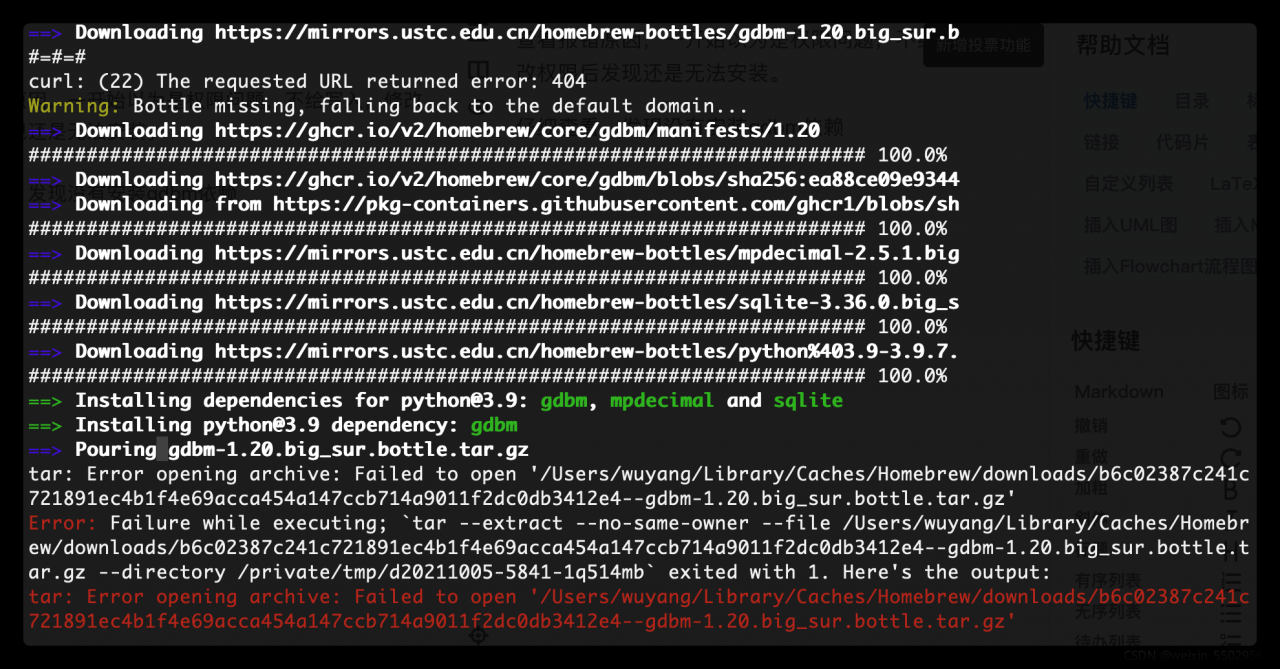

- #Brew install opencv with ffmpeg mac os x#
- #Brew install opencv with ffmpeg windows 10#
- #Brew install opencv with ffmpeg software#
- #Brew install opencv with ffmpeg license#
Patching file cmake/OpenCVFindOpenNI.cmake => Pouring libpng-1.5.17.mavericks.bottle.1.tar.gz => Installing dependencies for opencv: cmake, libpng expect a ton of very helpful warnings and complicated-looking output, followed byĮxport PYTHONPATH=/usr/local/Cellar/opencv/2.4.7.1/lib/python2.7/site-packages:$PYTHONPATHįinally, in a new terminal window: brew install opencv ➜ we-main git:(feature/112-org-thumb) ✗ brew install opencv brew install python - (many bad links to delete here, ended up forcing it).If your py is in good shape you may be able to skip down to 'brew install opencv'. Remote: Total 3828 (delta 27), reused 0 (delta 0) Remote: Compressing objects: 100% (63/63), done. Remote: Reusing existing pack: 3765, done. (you need an apple developer account, use your apple id)Ĭloning into '/usr/local/Library/Taps/homebrew-science'.fire up xcode - to insure that command line tools are there.Give privilages to run the shell script to start application $ chmod +x getModels.sh #weightsFile = "./models/colorization_release_v2_norebal.caffemodel" WeightsFile = "./models/colorization_release_v2.caffemodel" ProtoFile = "./models/colorization_deploy_v2.prototxt" You still need to download the models: #Specify the paths for the 2 model files Now you should have installed the necessary packages Open a terminal in the headpose directory and run (with sudo if needed on your system): $ pip install -r requirements.txt *greyimages/coloredimages/* contains colorized images Installation *greyimages/* contains grey scale images for colorization Potentially needing: pip3 install opencv-contrib-python Structure *models/* contains the models used in this example we use Facial Landmark detection 68 points. I found that Python 3 was necessary for cv2.dnn "dnn" module use in this step. When working on Windows I found that Python 3 was necessary for cv2.dnn "dnn" module use in the colorization step. Navigate back to the 'colorize-video/' directory and run $ getModels.sh Python
#Brew install opencv with ffmpeg license#
License GPLv3+: GNU GPL version 3 or later
#Brew install opencv with ffmpeg software#
win32dev/misc/wget/out64/lib/libunistring.a -lws2_32Ĭopyright (C) 2015 Free Software Foundation, Inc. Start a new Command Prompt and the wget command should be available $ wget -versionĪfter entering the -V -version command you should see something similar to the following command prompt output: GNU Wget 1.19.4 built on mingw32. I used version 1.19.4 which was found here:Įxtract the contents of the zip folder and add the directory containing only the extracted files to your PATH environment variables. "A command-line utility for retrieving files using HTTP, HTTPS and FTP protocols."
#Brew install opencv with ffmpeg windows 10#
Running getModels.sh requires 'wget' which is not native to Windows 10 Simplest way to get ffmpeg installed is toĮxtract the contents of the zip folder and add the directory containing only the extracted files to your PATH environment variables. Once you have Homebrew installed install ffmpeg from the Terminal with the following: $ brew install ffmpeg Windows FFmpeg
#Brew install opencv with ffmpeg mac os x#
The simplest way to install ffmpeg on Mac OS X is with Homebrew. $ sudo apt-get install ffmpeg Mac OS (Homebrew) Make sure that ffmpeg is in your bin path etc if you are unable to enter in terminal after restart or after reinvoking bashrc using "source".

The simplest of all the land is our friend Ubuntu, where the following command would suffice for installation of ffmpeg library. "A complete, cross-platform solution to record, convert and stream audio and video." Linux (Ubuntu)


 0 kommentar(er)
0 kommentar(er)
